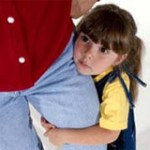The alarming neuroscience of taunting
By Emily Anthes
 In the wake of several tragedies that have made bullying a high-profile issue, it’s becoming clear that harassment by one’s peers is something more than just a rite of passage. Bullied kids are more likely to be depressed, anxious, and suicidal. They struggle in school — when they decide to show up at all. They are more likely to carry weapons, get in fights, and use drugs.
In the wake of several tragedies that have made bullying a high-profile issue, it’s becoming clear that harassment by one’s peers is something more than just a rite of passage. Bullied kids are more likely to be depressed, anxious, and suicidal. They struggle in school — when they decide to show up at all. They are more likely to carry weapons, get in fights, and use drugs.
But when it comes to the actual harm bullying does, the picture grows murkier. The psychological torment that victims feel is real. But perhaps because many of us have experienced this sort of schoolyard cruelty and lived to tell the tale, peer harassment is still commonly written off as a “soft” form of abuse — one that leaves no obvious injuries and that most victims simply get over. It’s easy to imagine that, painful as bullying can be, all it hurts is our feelings.
A new wave of research into bullying’s effects, however, is now suggesting something more than that — that in fact, bullying can leave an indelible imprint on a teen’s brain at a time when it is still growing and developing. Being ostracized by one’s peers, it seems, can throw adolescent hormones even further out of whack, lead to reduced connectivity in the brain, and even sabotage the growth of new neurons.
These neurological scars, it turns out, closely resemble those borne by children who are physically and sexually abused in early childhood. Neuroscientists now know that the human brain continues to grow and change long after the first few years of life. By revealing the internal physiological damage that bullying can do, researchers are recasting it not as merely an unfortunate rite of passage but as a serious form of childhood trauma.
This change in perspective could have all sorts of ripple effects for parents, kids, and schools; it offers a new way to think about the pain suffered by ostracized kids, and could spur new antibullying policies. It offers the prospect that peer harassment, much like abuse and other traumatic experiences, may increasingly be seen as a medical problem — one that can be measured with brain scans, and which may yield to new kinds of clinical treatment.
During the first half of the 20th century, even severe child abuse was considered a largely psychological problem in its long-term effects, denting children emotionally in a way that made it hard for them to grow into happy adults.
Gradually, however, scientists began to look at the brains of adults who had been abused as children and realize that the damage wasn’t just emotional: Their brains had undergone telltale long-term changes. Over the past two decades, neuroscientists have marshaled plenty of evidence that serious physical and sexual abuse during early childhood can short-circuit normal brain development.
But what about cruelty that is emotional rather than physical? That that comes from peers instead of parents? And happens at school instead of at home, when children’s brains are no longer so young and malleable? In other words, what about bullying?
Martin Teicher, a neuroscientist at McLean Hospital in Belmont, has been examining just these kinds of scenarios. He began by studying the effects of being verbally abused by a parent. In his study of more than 1,000 young adults, Teicher found that verbal abuse could be as damaging to psychological functioning as the physical kind — that words were as hurtful as the famous sticks and stones. The finding sparked a new idea: “We decided to look at peer victimization,” he said.
So Teicher and his colleagues went back to their young adult subjects, focusing on those they had assumed were healthy in this respect — who’d had no history of abuse from their parents. The subjects, however, varied in how much verbal harassment — such as teasing, ridicule, criticism, screaming, and swearing — they had received from their peers.
What the scientists found was that kids who had been bullied reported more symptoms of depression, anxiety, and other psychiatric disorders than the kids who hadn’t. In fact, emotional abuse from peers turned out to be as damaging to mental health as emotional abuse from parents. “It’s a substantial early stressor,” Teicher said. The data were published in July in the American Journal of Psychiatry.
Things got even more interesting when Teicher decided to scan the brains of 63 of his young adult subjects. Those who reported having been mistreated by their peers had observable abnormalities in a part of the brain known as the corpus callosum — a thick bundle of fibers that connects the right and left hemispheres of the brain, and which is vital in visual processing, memory, and more. The neurons in their corpus callosums had less myelin, a coating that speeds communication between the cells — vital in an organ like the brain where milliseconds matter.
It’s not yet entirely clear what these changes in the corpus callosum may lead to, or whether they’re connected to the higher rates of depression that Teicher found in bullied kids. “There may be some subtle neurocognitive difficulties,” he said. “We’re currently doing research that will allow us to answer this question better.”
Teicher’s study is just one of a number of recent studies that have been finding troubling physical effects of even verbal bullying. For the past several years, Tracy Vaillancourt, a psychologist at the University of Ottawa, has been following a group of 12-year-olds, including some who had a history of being victimized by their peers, and assessing their functioning every six months. Among other things, she has discovered that being tormented by other kids can recalibrate children’s levels of cortisol, a hormone pumped out by the body during times of stress.
In a 2008 paper published in the journal Aggressive Behavior, Vaillancourt demonstrated that boys who are occasionally bullied have higher levels of cortisol than their peers. Bullied girls, meanwhile, seem to have abnormally low levels of the hormone. (It’s not entirely clear why that’s the case, but low cortisol levels are sometimes a sign of a body that has been so chronically stressed that it has learned to make less of the hormone.)
Vaillancourt speculates that cortisol may, in fact, underlie many of the adverse effects of bullying: It can weaken the functioning of the immune system, and at high levels can damage and even kill neurons in the hippocampus, potentially leading to memory problems that could make academics more difficult. Indeed, Vaillancourt has already found that teens who are bullied perform worse on tests of verbal memory than their peers. One of her next studies involves trying to get at this question directly: She will be putting some of her subjects — now ages 16 and 17 — into an MRI machine to look for evidence of damage to the hippocampus.
esearch on animals suggests that Vaillancourt might be onto something. To model the kind of psychosocial stress that accompanies bullying, Daniel A. Peterson, a neuroscientist at the Chicago Medical School, did a series of experiments in which he put a young, subordinate rat in a cage belonging to a much larger, older, more aggressive rat. The dominant rat — the king of this particular playground — promptly began to push the smaller one around. “We let it go to the point where there’s substantial physical contact, maybe a bite or two,” Peterson said. Then, the researchers would rescue the younger rat, removing him from the cage before he could be seriously injured.
As Peterson documented in a 2007 paper in the Journal of Neuroscience, just a single session of this kind of bullying was enough to leave a mark on the smaller rat’s brain. In particular, Peterson and his colleagues examined the rate of neurogenesis, or the birth of new brain cells, in that same all-important memory-maker: the hippocampus. The bullied rats still made new neurons at a normal rate, but there was a significant hiccup in the process — an unusually high percentage of the cells would die off before becoming fully mature.
It’s not yet clear how long these changes last. Peterson suspects that neuron survival returns to normal if the bullying is a single, isolated incident, as it was with his rats. But, he says, “I think if you had a more persistent stressor of this level, it could reset the thermostat so you’d have a lower level of neurogenesis going on.”
Research into the neurological effects of bullying is still preliminary, and animal models are not perfect replicas of human social behavior. But together, these early findings suggest that bullying, even the verbal kind, is more similar to physical and sexual abuse than we might like to admit. No longer can we draw a clear line between the two kinds of mistreatment — they can both produce the same kind of trauma.
There is still much that neuroscientists need to sort out, however. It remains difficult to thoroughly disentangle cause and effect: It’s possible, for instance, that kids with certain hormonal levels or brain characteristics are more likely, for whatever reason, to be bullied in the first place. And, encouragingly, changes in the brain don’t always translate into long-term damage: Indeed, some of the subjects who had what researchers suspect are bullying-related brain changes are now happy, healthy adults.
But the findings are certainly provocative, and they raise some serious questions about how we should think about bullying. Does being victimized have subtle effects on cognitive functioning that we haven’t even noticed yet? Might some kids be more likely to develop the neurological hallmarks of bullying? Now that we know that victims are undergoing profound physiological changes, are there medical interventions that would be as helpful, or more so, than counseling and therapy? Would demonstrating that bullying scars the brain make it easier to prosecute bullies in court?
Vaillancourt, for her part, sees another kind of value to the new neurobiological research: as a tool to change how bullying is seen by the public, as well as by educators who may be in a position to intervene. In the past, Vaillancourt has been frustrated that her studies on the emotional and psychological effects of bullying have not generated much attention. “When I show that something is biological, it makes headlines,” she said. “For some reason I think humans are more compelled to believe biological evidence than someone saying, ‘Oh I’m depressed. I don’t feel good about this.’ I’m hoping that that is a policy changer.”
 St. Peters, MO (KSDK) – Bullying among children and teens is being called an epidemic by some. President Obama, even released an anti-bullying message after several suicides among youths were reported last fall.
St. Peters, MO (KSDK) – Bullying among children and teens is being called an epidemic by some. President Obama, even released an anti-bullying message after several suicides among youths were reported last fall.















